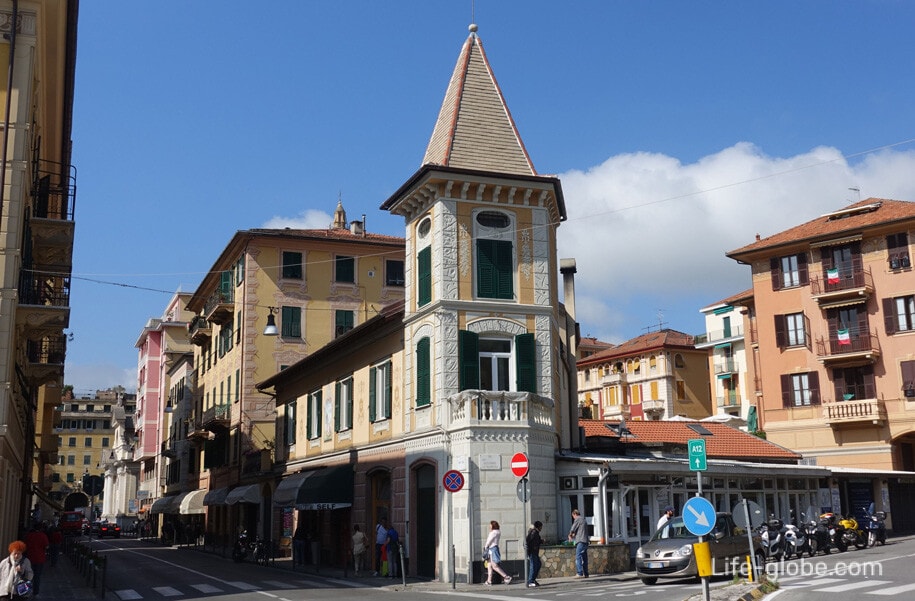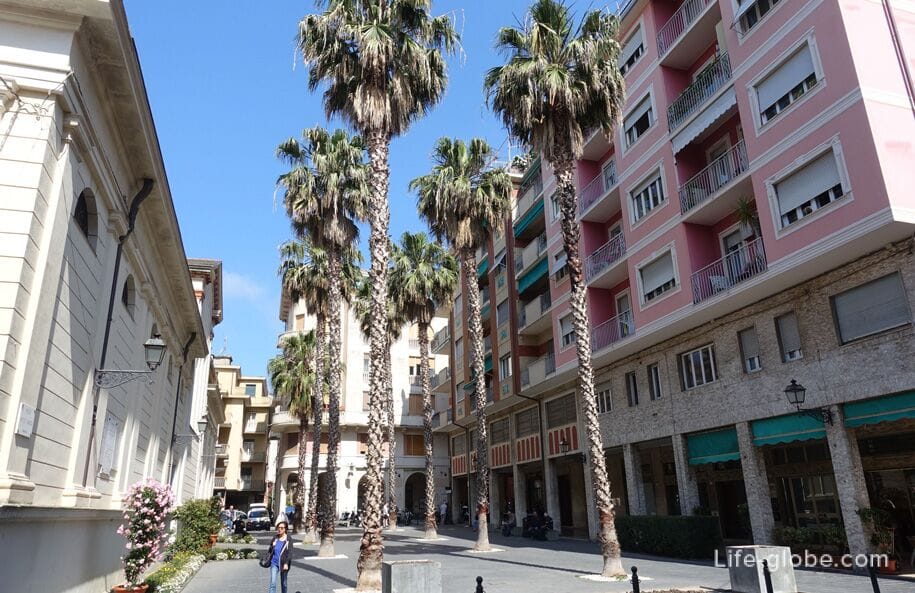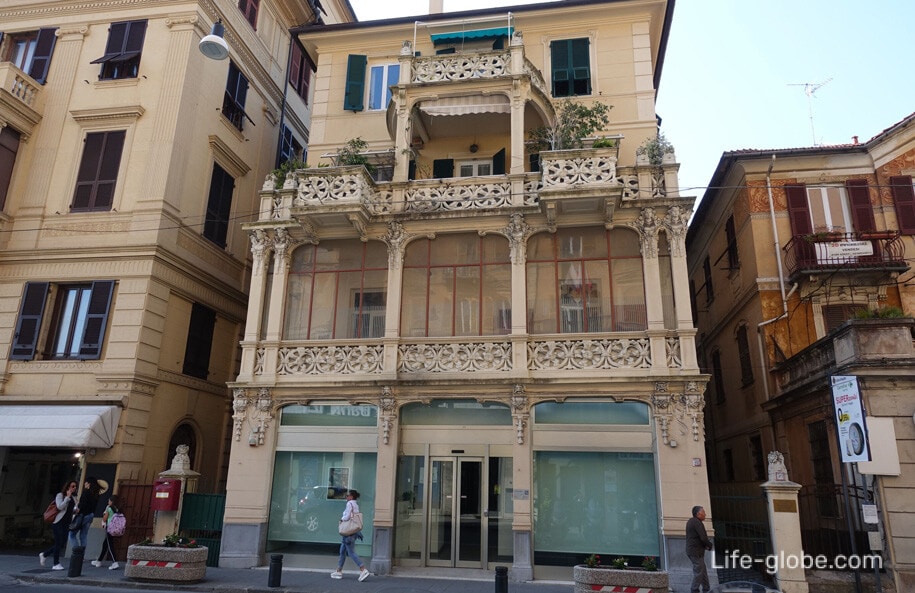
Rapallo is a resort town located in the east of the Ligurian Riviera (Riviera di Levante), in the western part of Tigullio Bay, between the cities of Santa Margherita Ligure (in the south-west along the coast) and Zoagli (in the east along the coast).
This is the sixth municipality of Liguria in the number of inhabitants.
Due to its geographical situation - on the one hand the city is surrounded by hills covered with dense vegetation, and the waters of the Ligurian sea, which contributes to the mild climate plus the proximity to the famous Portofino and the major city of Genoa, where the international airport and developed transport network, Rapallo is one of the most popular tourist and seaside resorts in the Italian part of the Ligurian coast.
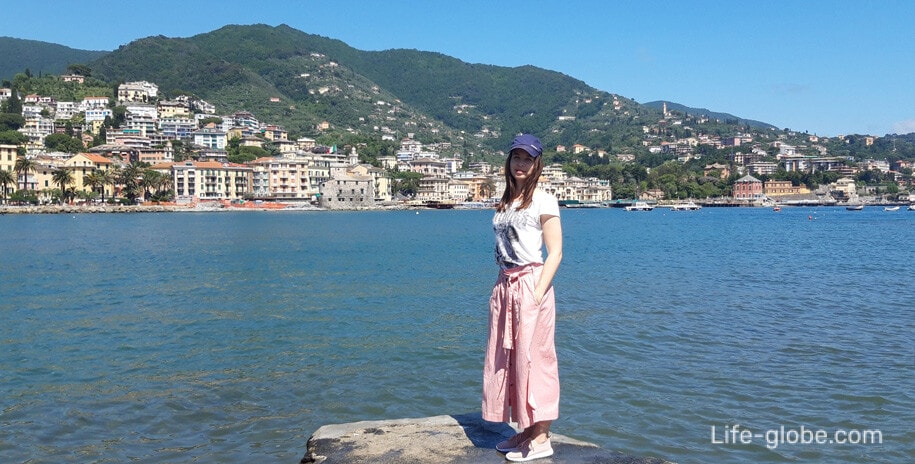
The city's patron is the virgin Montalegre. The holiday is celebrated annually on 2 July.
The first inhabited nucleus in the area of Rapallo, apparently, dates back to 700 BC, the Birth of tourism in Rapallo began in the second half of 1800-ies, when the first railway line. A significant increase in tourism was due to the flow of British, French and Germans in the first half of the 1900's and opening one of the first Italian casino.
Today Rapallo is a developed resort which is visited annually by thousands of tourists.
The city centre is concentrated in the Central part of the coast of Rapallo from the Bay.
The basis of the Rapallo centre are the promenade (the promenade), old town and Central beaches.
In this part of the city is concentrated the main tourist life.
The historical centre of Rapallo is an old town of medieval origin with preserved layout.
The core of the tourist centre made up of such streets as the via Giuseppe Mazzini (Via Giuseppe Mazzini), via Venezia (Piazza Venezia), via Marsala (Via Marsala), as well as promenade - via Vittorio Veneto (via Vittorio Veneto) and in the adjoining streets and squares.
The streets of the historic centre of Rapallo is a narrow pedestrian area with small squares, historical buildings, painted in bright colors typical of Liguria, as well as an abundance of cafes, restaurants, shops and boutiques.
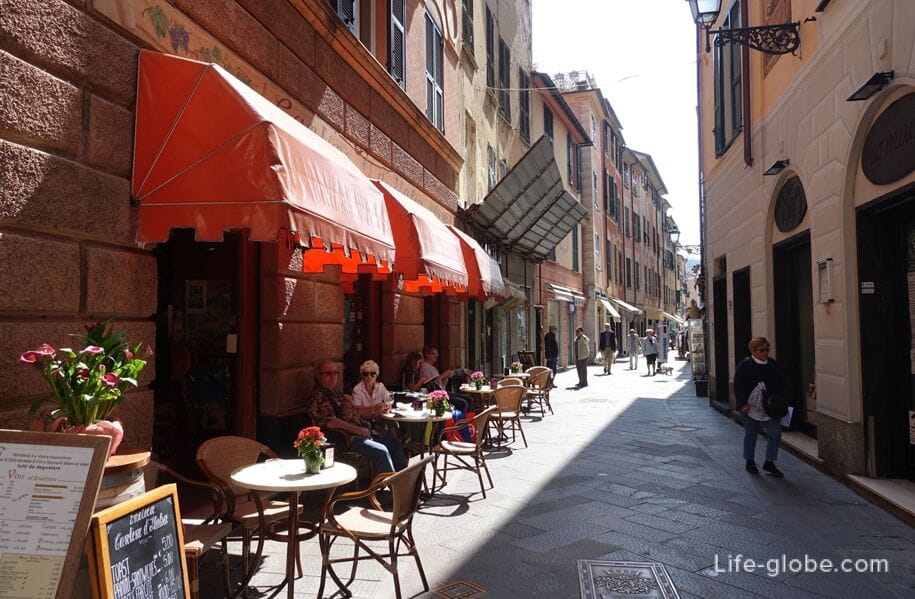
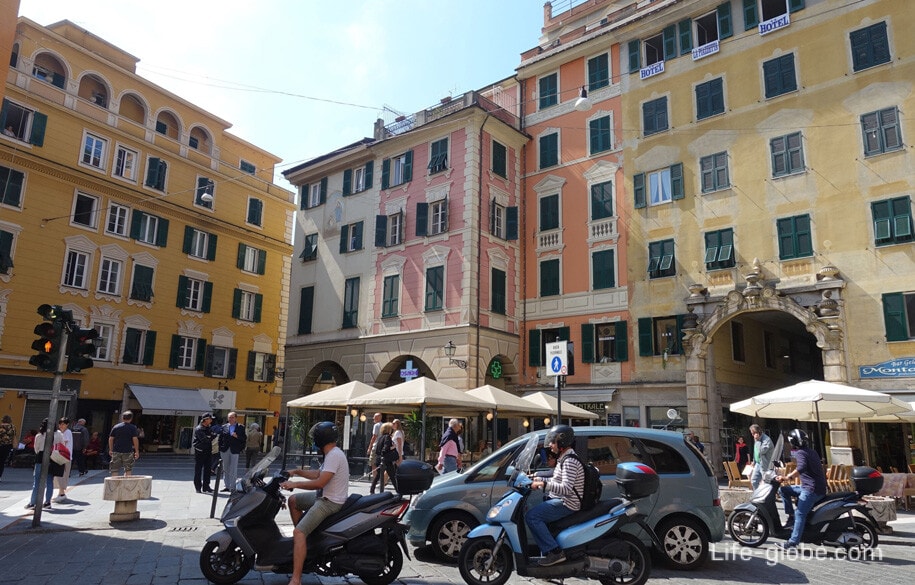
A part of the historic center are the main attractions of Rapallo:
- Church of Saints Gervasio and Protas (Basilica dei SS. Gervasio e Protasio), probably built in medieval times, and a sign inside indicates the date "1118 year".
The exterior of the Church is notable for the oblique high bell tower Dating back to 1753.
The Church divided into three naves by two rows of massive columns with arched connections.
The interior is remarkable for its frescoes and stained glass Lancet Windows.
In the presbytery there is a large marble altar, commissioned June 1, 1728. In the center is the marble surround, the group appearances of our lady Montallegro;
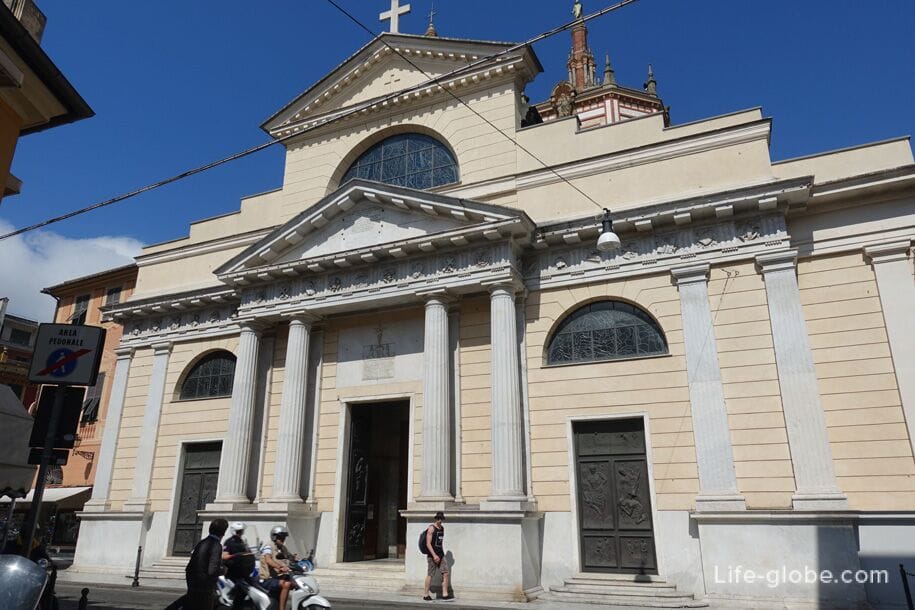
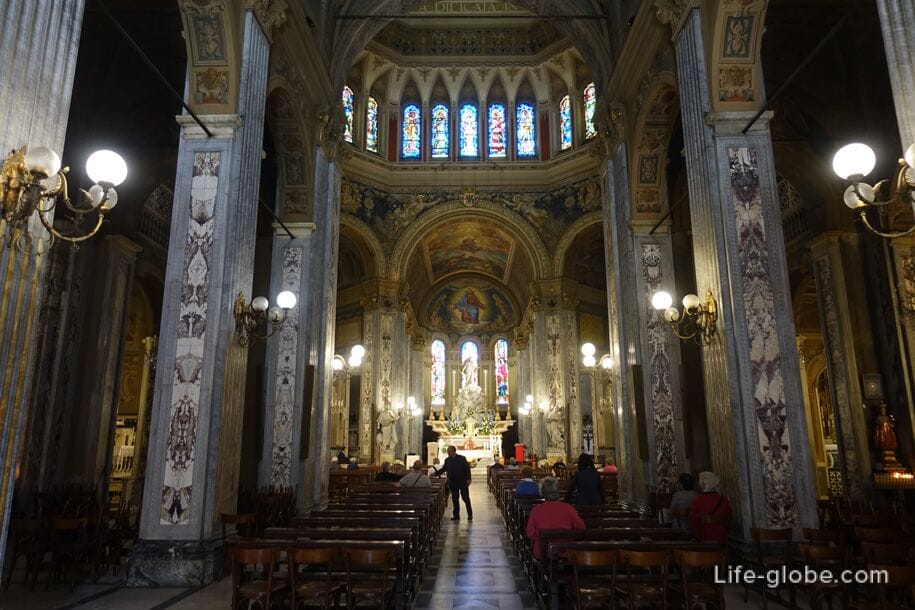
- Church of Santo Stefano and the Civic tower (Chiesa di Santo Stefano, Torre Civica).
The Church of St. Stephen is considered the first parish in Rapallo and is believed to be built in the first residential center of the village before the year 1000.
Now the Church is the Oratorio dei Neri.
In 1459 near the Shrine was erected by the Civic tower, a symbol of municipal freedoms, now the symbol of Rapallo. In the upper part of the tower is the bell tower;
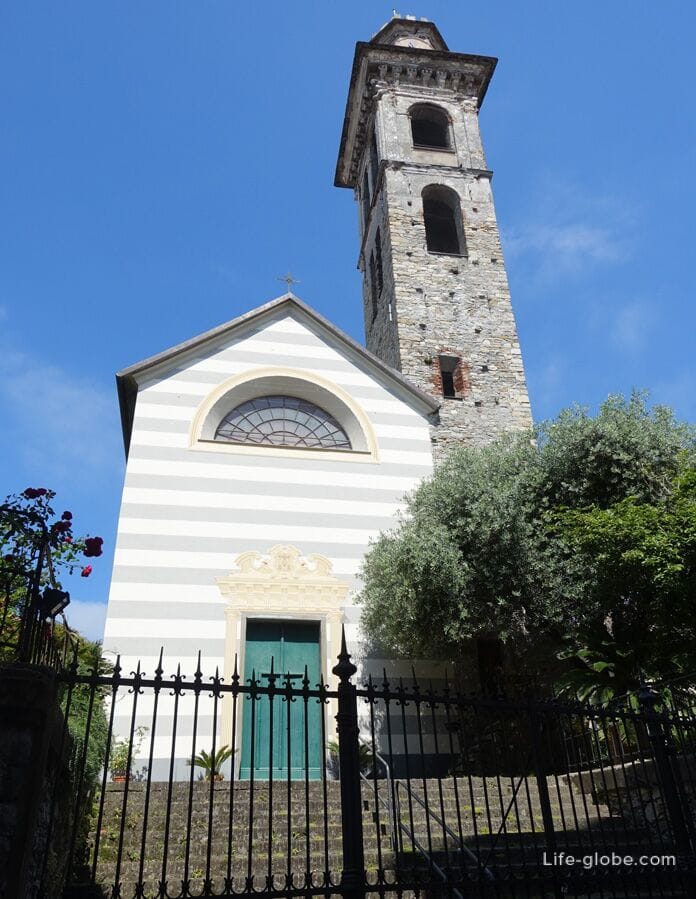
- the oratorio dei Bianchi (Oratorio dei Bianchi), built in the second half of the 15th century and originally dedicated to the virgin Mary.
Still on a marble tablet placed on the facade, the bas-relief depicts two brothers in the hoods, holding a beach;

- port delle saline (Porta delle Saline).
The only surviving gate of the ancient village surrounding Rapallo. Initially the gate was five.
The gates of Salina connects the historic centre with the promenade of Rapallo.
In that part of the gate which faces the historic centre, they decorated the altar in the Baroque style, which is a reproduction of the famous icon of the Madonna di Montallegro. Read more about historic centre of Rapallo...
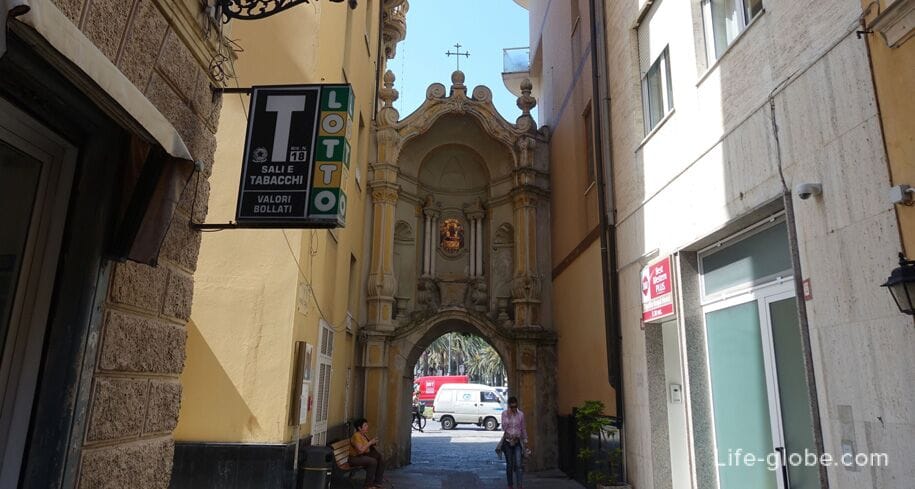
Promenade in Rapallo promenade, which runs along the Central part of the coast of the city.
The Central promenade of Rapallo called the promenade Vittorio Veneto (via Vittorio Veneto) is one of the most popular places for walking and recreation in the city.

On the opposite embankment side of the road there are historical buildings with colorful facades on the first floor where there are cafes and restaurants.
Among the buildings along the waterfront are hotels, among which we can highlight: 3-star hotel Vesuvio, the hotel Albergo Bandoni and 3-star hotel Miramare, which offers wonderful views of the seafront and the Ligurian sea.
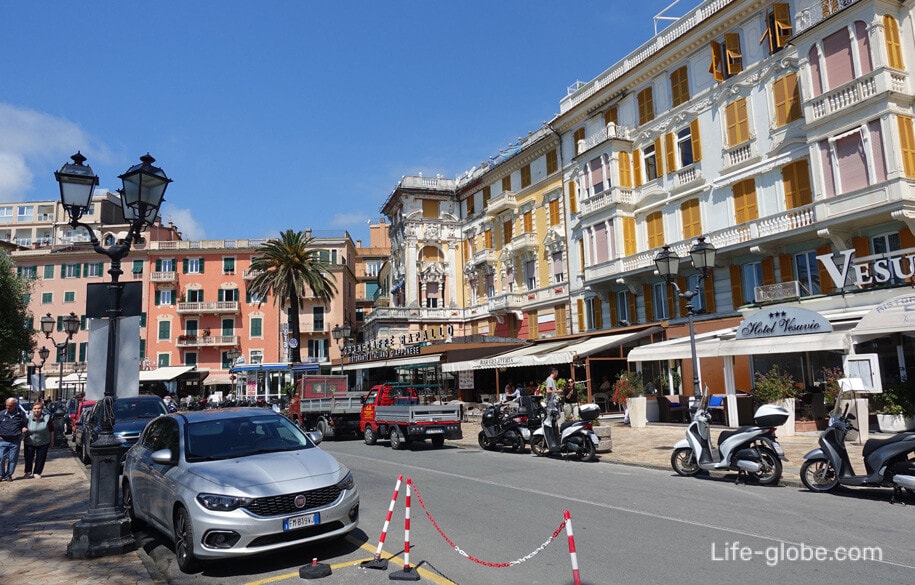
Sights in Rapallo's seafront:
- the house of Garibaldi (Casa Garibalda) with characteristic white and gray bands located near the waterfront.
On the facade of the marble coat of arms of Admiral Biaggio Assereto indicates that the house dates from the 14th century, and particie at home, he should be considered more ancient;

- the Rapallo castle (Castello di Rapallo), also known as the ancient castle on the sea, built in 1550 to defend.
Over the years the castle has undergone changes and additions.
For a long time the Fort was used as a prison, but was rebuilt and currently is a prestigious venue for exhibitions and conferences;
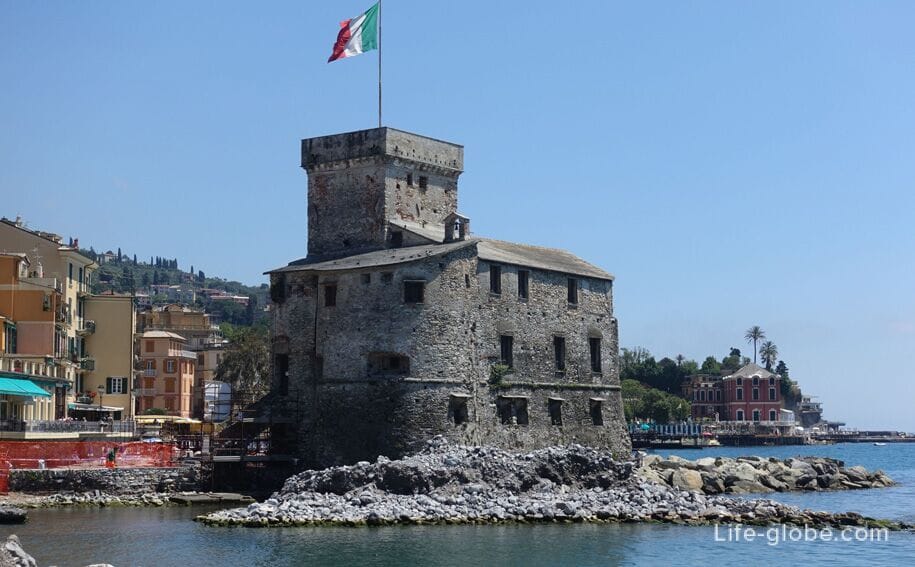
- "Music box" (Chiosco della Musica), opened on November 3, 1929, for concerts, and is a reminder of the Liberty style of the late nineteenth - early twentieth centuries.
The pavilion has a diameter of 10 meters and a height of 9 metres, with 12 columns supporting the dome in the inner part of which is shown in the most important Italian and foreign composers;


- the Christopher Columbus monument (Monumento a Cristoforo Colombo), outdoor 21 may 1914 and located in the area of 4 November (Piazza 4 Novembre).
The work was fully funded by emigrants from Rapallo in North and South America, in memory of their homeland.
Local note States that the thumb of Columbus looking directly in sea water, indicates it is on the American continent. Read more about the quays in Rapallo...
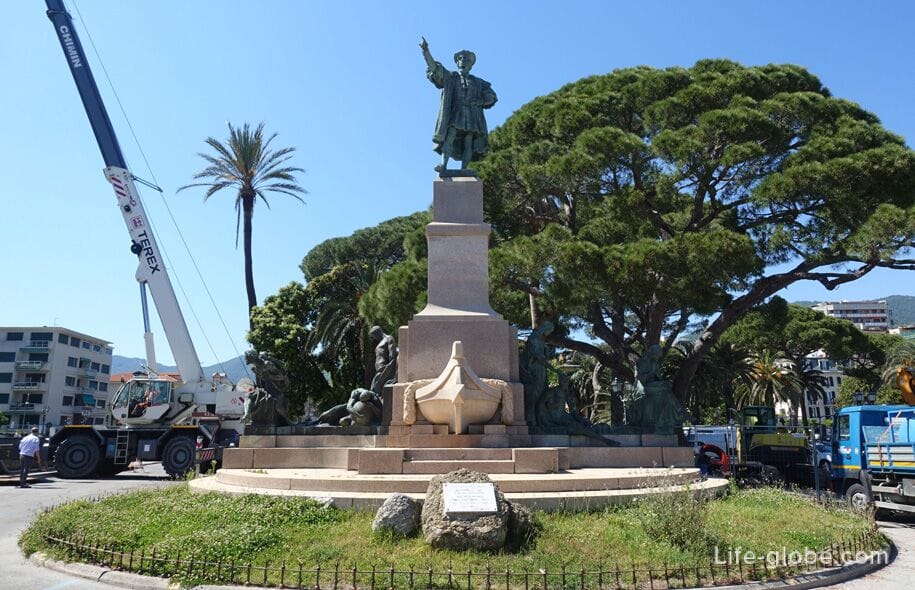
The Central beaches of Rapallo is located in the South-Western side of the Central promenade. There is also a small stretch of beach East of the castle of Rapallo.
All the beaches are public of Rapallo, which also there are private beach clubs (Bangui), providing a full range of beach services: sun loungers and parasols, showers and toilets, changing cabins and chambers for storage of small items, beach cafes, bars, and decks for ease of movement and urns, rescue centers and first aid. Some paid beach areas have swimming pools and playgrounds.
The daily pass is valid from 20.
On the coast of allocated and free areas of the beach where you can stay on your towel or beach Mat. Read more about beaches in Rapallo...
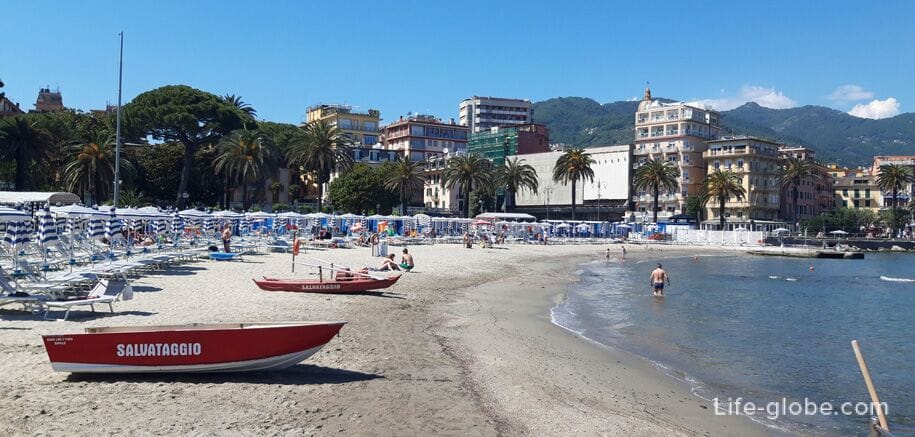
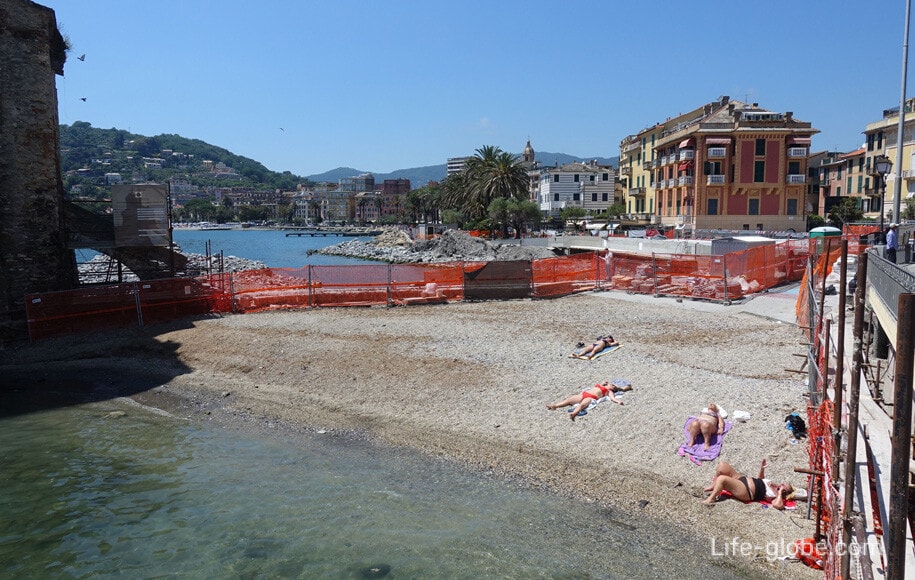
In Rapallo remarkable sea port of Rapallo (Harbor, Marina, pier), consisting of public port and the tourist port "Carlo Riva" (Porto Carlo Riva).
This port is one of the largest and most prestigious ports of the Riviera di Levante and the tourist port Carlo Riva was the first tourist port in Italy.
From the port you can take boat trips to resorts such as mountain, Sestri Levante, Santa Margherita Ligure, the fashionable Portofino, the Cinque Terre, La Spezia, etc.
Port to Rapallo is not the only place where yachts are moored, but also a tourist area, offering visitors and yachtsmen many services, ship Chandler, Maritime agencies, cafes, restaurants, shops, boutiques and salons, as well as places to stay and Parking of vehicles on the waterfront of the port. Read more about the port in Rapallo...

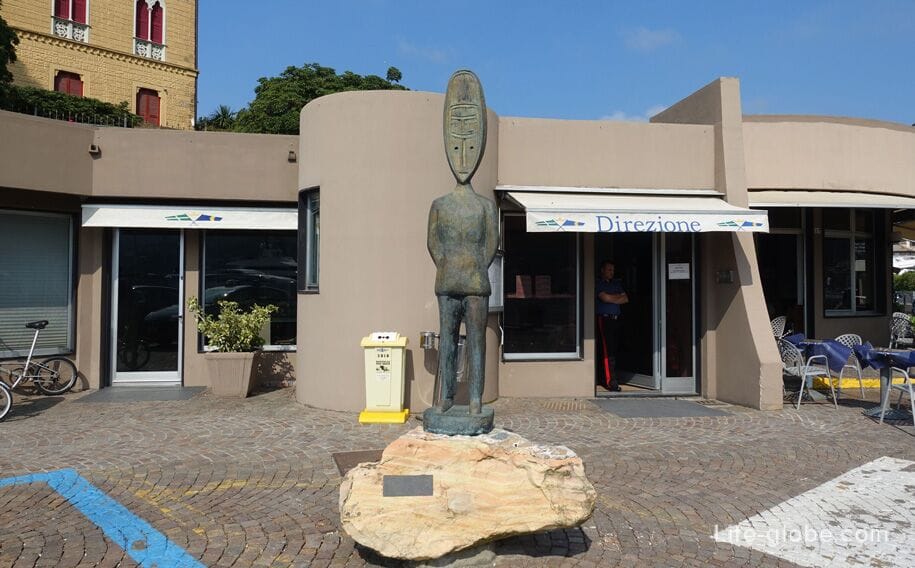
For the port of Rapallo originates the district of San Michele di pagana (San Michele di Pagana, Ligurian language: San Micke / San Miche) - a small suburb that is part of the municipality of Rapallo, located approximately 2 kilometers South along the coast from Rapallo's centre and stretching to the border with the city of Santa Margherita Ligure.
San Michele di Penaga is considered one of the most beautiful corners of Rapallo, where intertwined together clean sea water and thick vegetation.
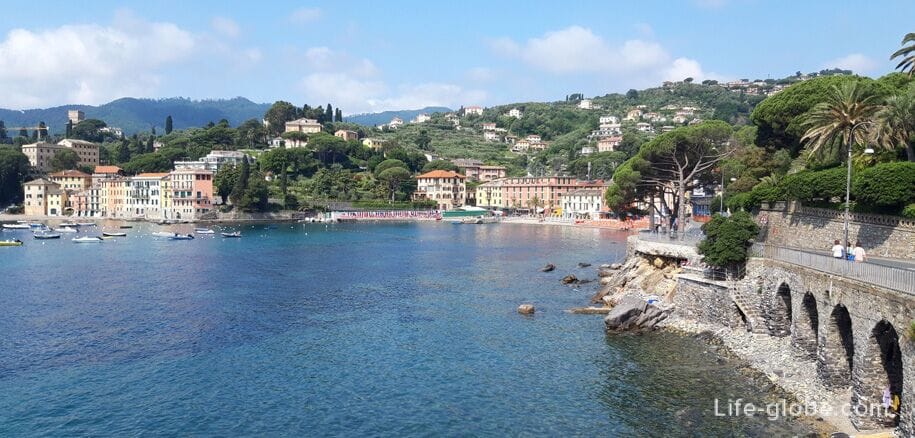
The coast of San Michele di pagana is divided into three smaller bays (bays): Pomaro (Pomaro) were Trelo or Travello (Trelo / Travello) and Rotting (Prelo), each of which has a small beach divided by a rocky hill.
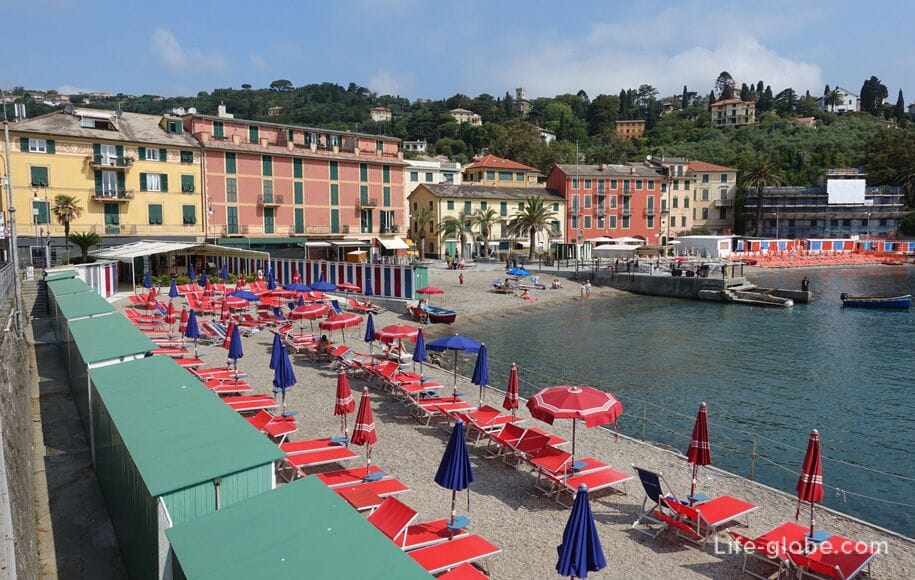


The attractions of San Michele di pagan:
- The Saracen tower (Torre of pagana / Pagana Torre), who served as defensive and showsa in the defensive zone, erected to protect against the growing number of attacks by pirates during the 16th century and the next century.
The tower was built in the early 1560's.
Since 1981, the tower is owned by the Italian environmental Fund, which conducted the restoration sights;

- Church of San Michele Arcangelo (Chiesa di San Michele Arcangelo, Chiesa di or S. Michele di Pagana).
According to the plaque located in the building of the first date of the Church belongs 1133 year.
The current Church interior has a single nave, where there is the main altar surmounted by a wooden crucifix by Anton Maria Maragliano;

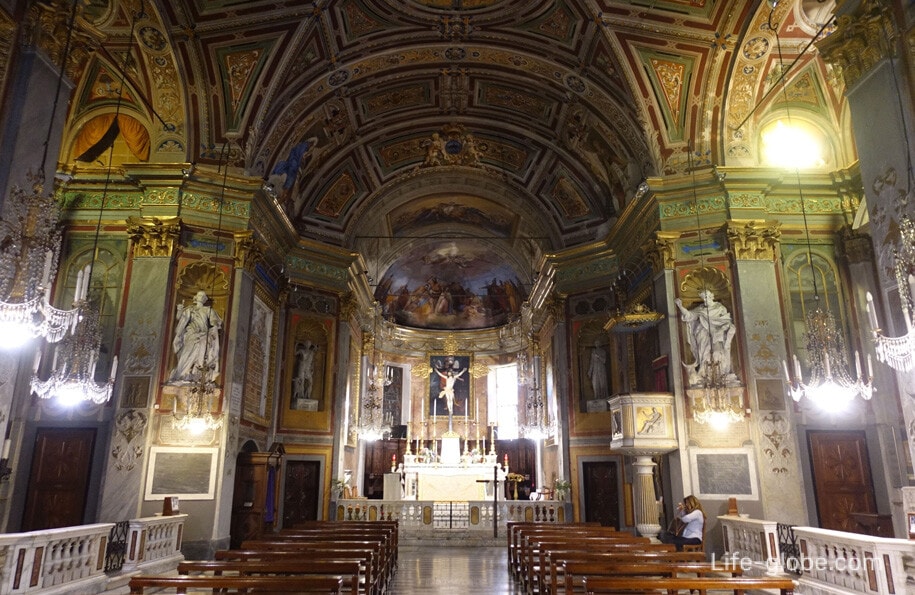
- The castle of Punta Panaga and Villa Panagia.
Almost on the nose of the rocky promontory of Punta pagana, near marine waters, is the castle of Punta Panaga (Castello di Punta Pagana) performing the functions of observation and defence, and erected in the 17th century (1625).
The castle is situated within a private Park of Villa Spinola or Villa of pagana (Pagana villa / villa Spinola), which as its last owner donated the Sovereign military order of Malta. In this connection, the Villa and the adjacent Park may be known locally as the Villa of the knights of Malta, or simply as the Villa Malta.
The Villa complex pagan closed to the public and consists of villas, Park and Fort. More about San Michele di pagan...
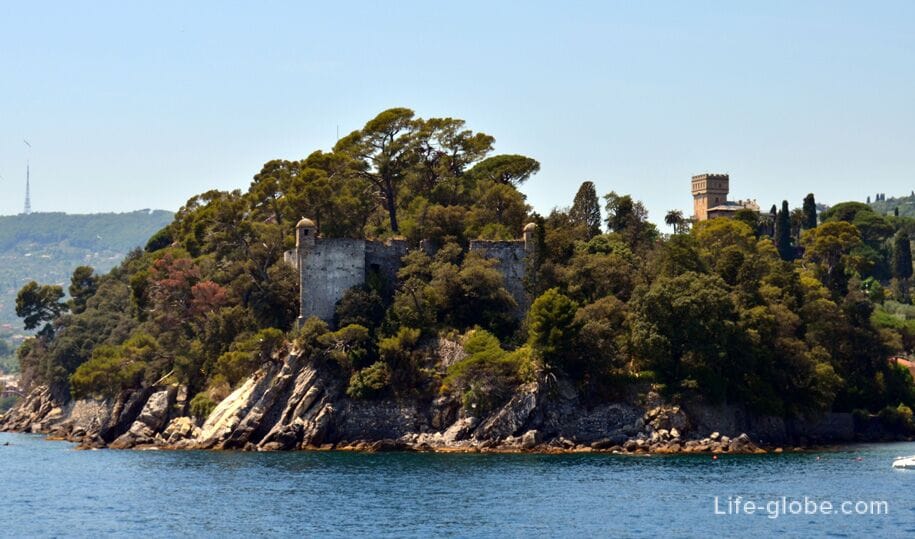
Along the Eastern coast of Rapallo, there are two area: San Rocco and Le Naghe or Le Nage (San Rocco, Le Nagge).
The length of the regions along the sea is about a kilometer. They are drawn from the theatre - auditorium delle Clarisse to the border with the town of Zoagli.
These districts have the largest number of baths in Rapallo. Beaches, among which are mostly toll roads (Bangui), last practically a single strip along the entire coast of the district of La Nagge and part of San Rocco.
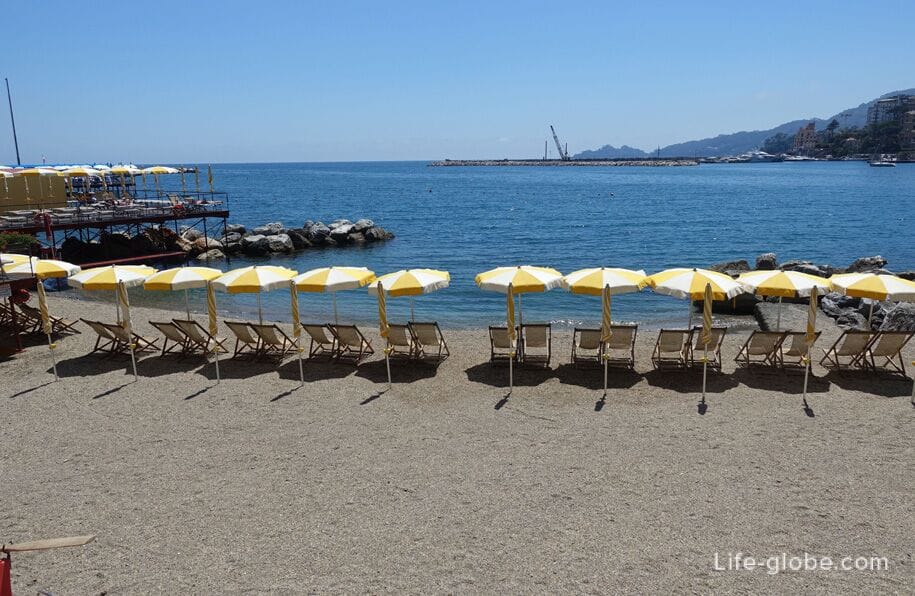
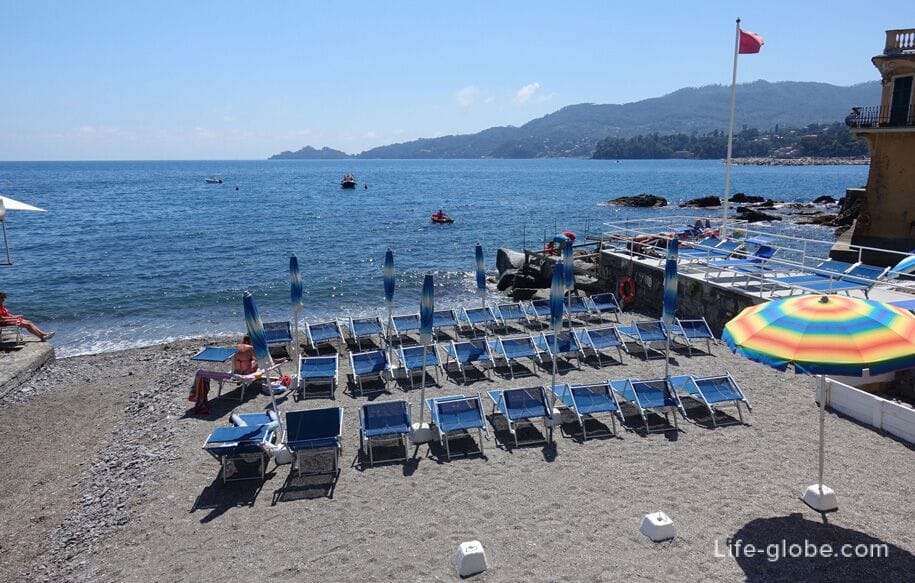
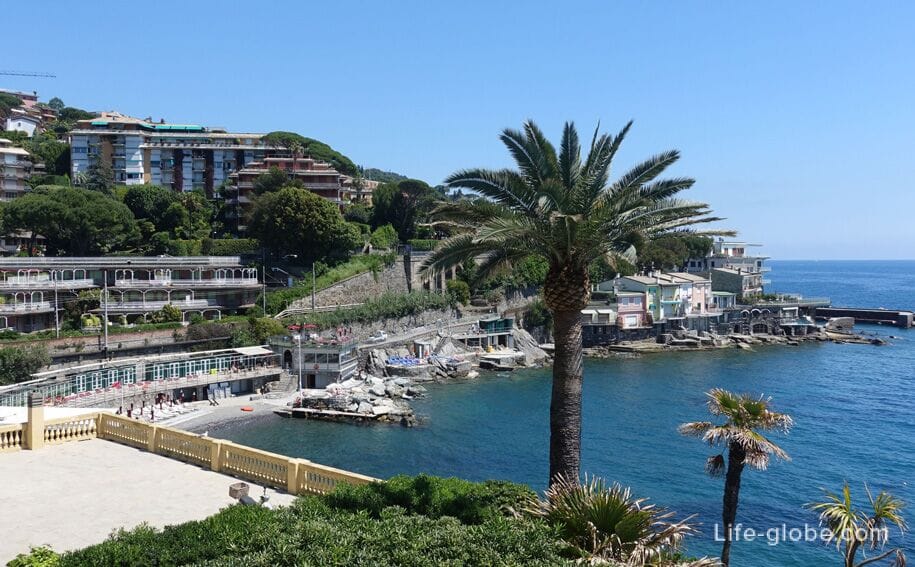
In the area of La Nagge notable for a large municipal Park "Luigi Casale" (Parco Comunale Luigi Casale), with paths and walking paths and a garden with children's Playground.
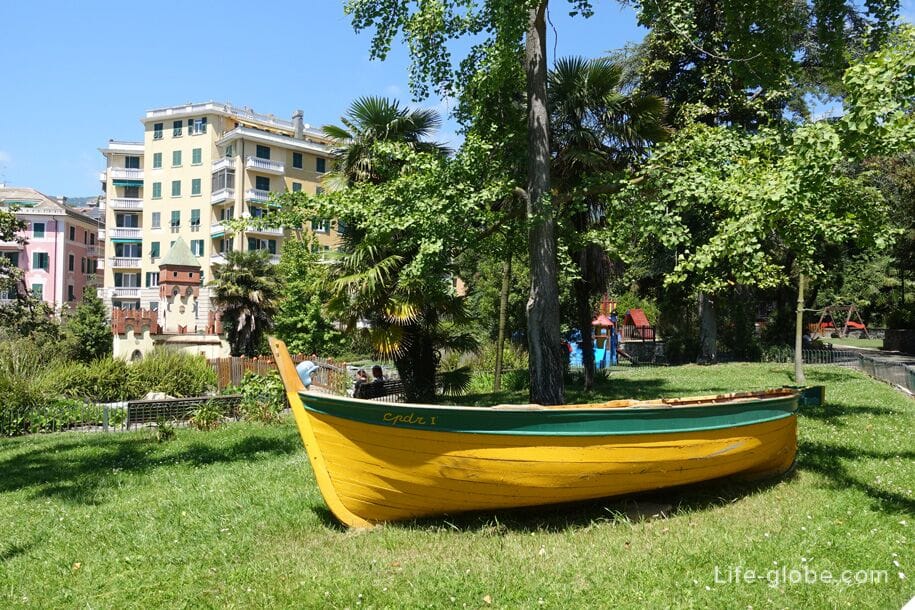
The sights of San Rocco and Le Naghe:
- the theatre-auditorium delle poor Clares (Theater - Auditorium of the Clarisse), which is a multifunctional centre, which offers theatre performances, congresses and conferences.
The theater building was formerly the Church of the monastery complex Clarisse, built in 1633 and was the convent of Santa Chiara until 1902. The building was used as barracks and warehouses, during and after the two world wars;
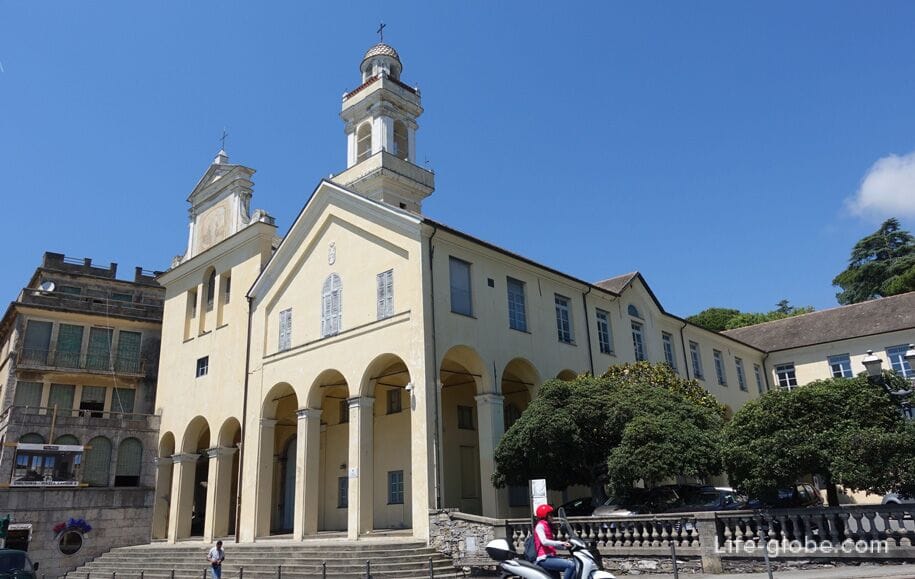
- Villa Porticciolo (Villa Porticciolo).
The walls of the Villa now houses a restaurant with an outdoor terrace with sea views, weddings, banquets and various social events;
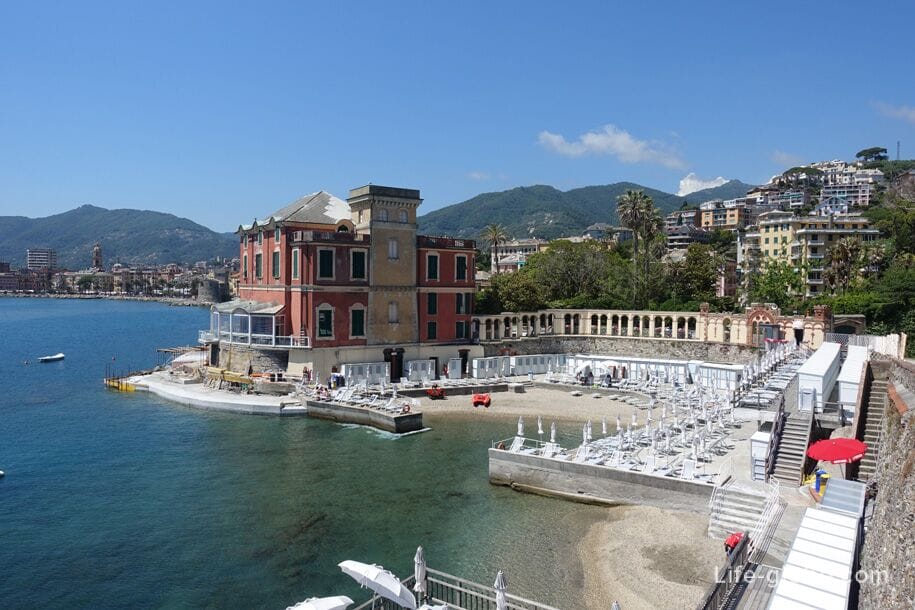
- Villa Tigullio (Tigullio Villa), built by the Spinola family as a family residence.
Currently, the walls of the Villa are: the lace Museum (museo del merletto) is open to the public in 1990, and a library.
The property reeks of a garden with a terrace, with panoramic views of the Gulf of Rapallo and the headland of Portofino;


- the chapel of San Rocco (Cappella Di San Rocco), built in 1497 on a small hill.
The original Church was dedicated to San Maria del Sello, and during the plague of 1657 and after San Rocco, the patron Saint of the plague. Read more about San Rocco and Le Naghe...
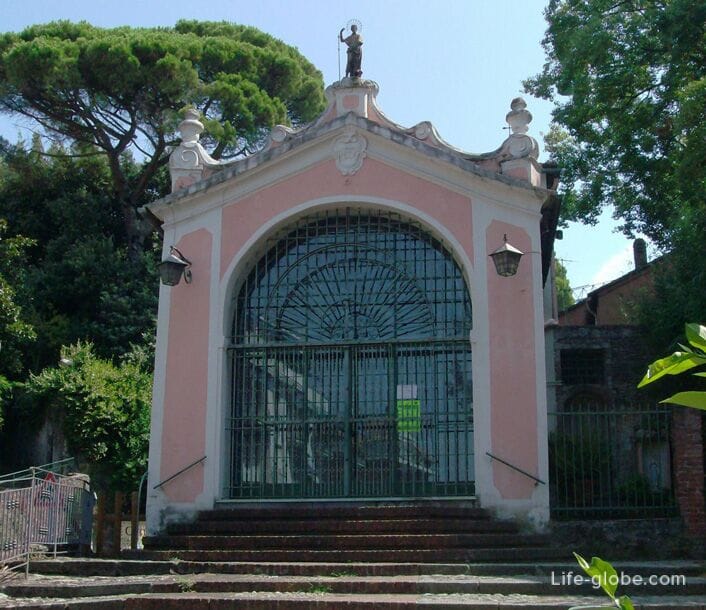
Beyond the coast and the historical centre, inside the city, are also sights:
- the Hannibal bridge (Hannibal Bridge), known as "Hannibal", which is a stone structure with only a Roman arch, which was probably built in the medieval period.
In 1823 it was decided to slightly change the flow of the river boat in the last section, in order to create a new railroad to the nearby town of Santa Margherita Ligure. For this reason, today the bridge is just attraction and is not used for its intended purpose - the bridge through the river;
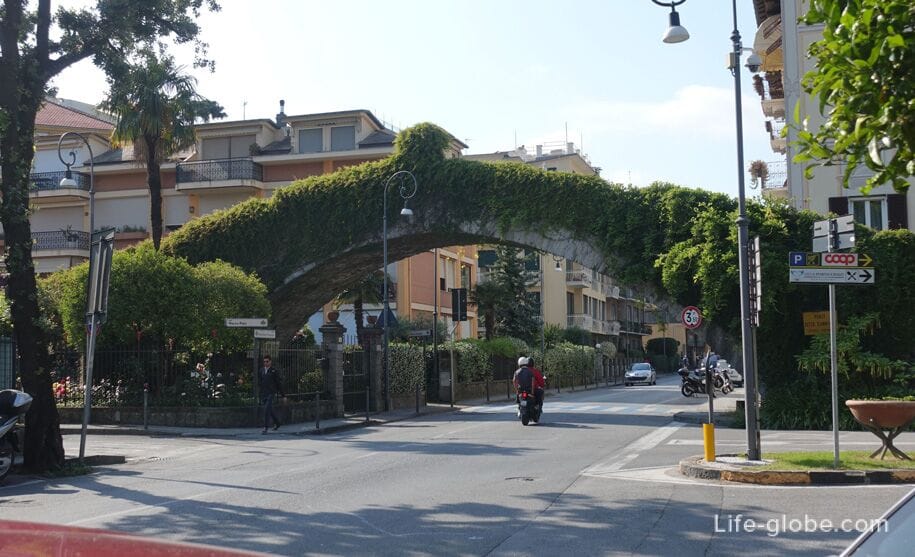
- Carolo Villa (Villa Queirolo) - one residential and historical villas in the municipality of Rapallo, built in the late nineteenth century.
For many years the Villa was the site of the city schools, until the restoration and adaptation works which turned it into a "House of culture";
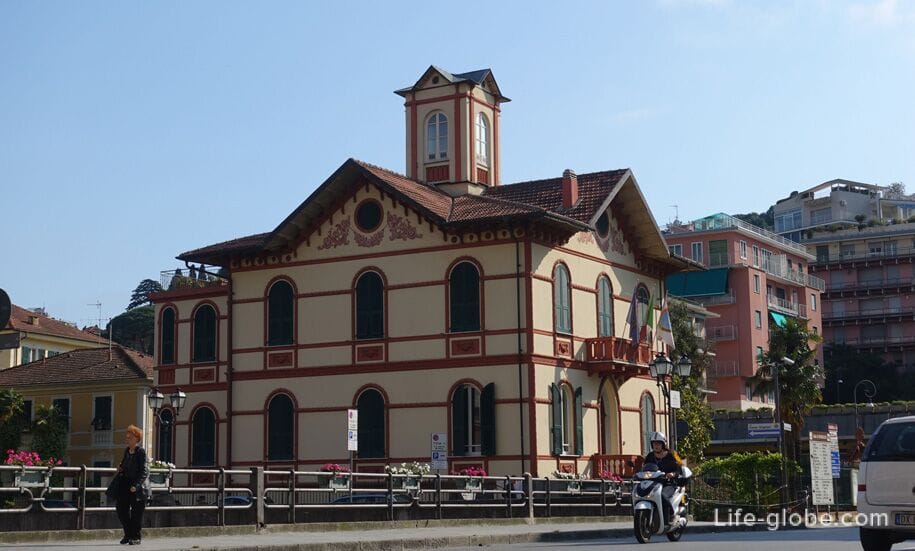
- the ruins of the Abbey of Valle Christi (I ruderi Dell'abbazia di Valle Christi) or the monastery of Valle Christi, located on the hills surrounding Rapallo, in the village of San Massimo, where some three kilometers from the waterfront.
The bell tower, pointed arches, small arches and a multi-million dollar Windows are still intact. Also survived a few elements of the monastery.
The territory of the ancient monastery, today is a venue for theatrical and musical performances, which are held every summer, with events designed to increase visitation of the monument;
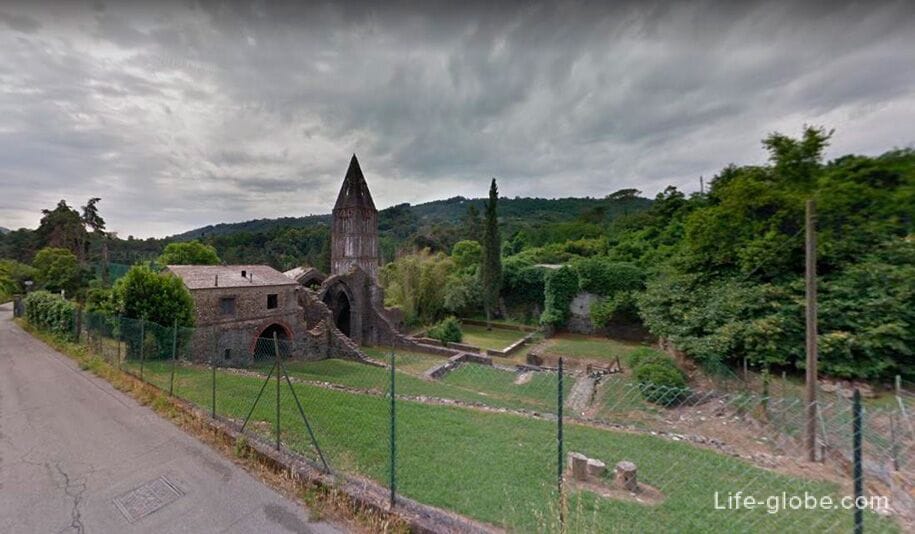
- lazaretto (Lazzaretto di Bana).
In 1450, after the epidemic of leprosy manifested within Rapallo and Recco, Giacomo d'asti, a rich citizen of Rapallo, the community donated a plot of land, located in Bath. This place was built, designed to accommodate local patients.
On the outside wall of the building is the image of the 15th century on which the Madonna and child depicted the Holy thaumaturgists Lazzaro, Giacomo and Biagio;
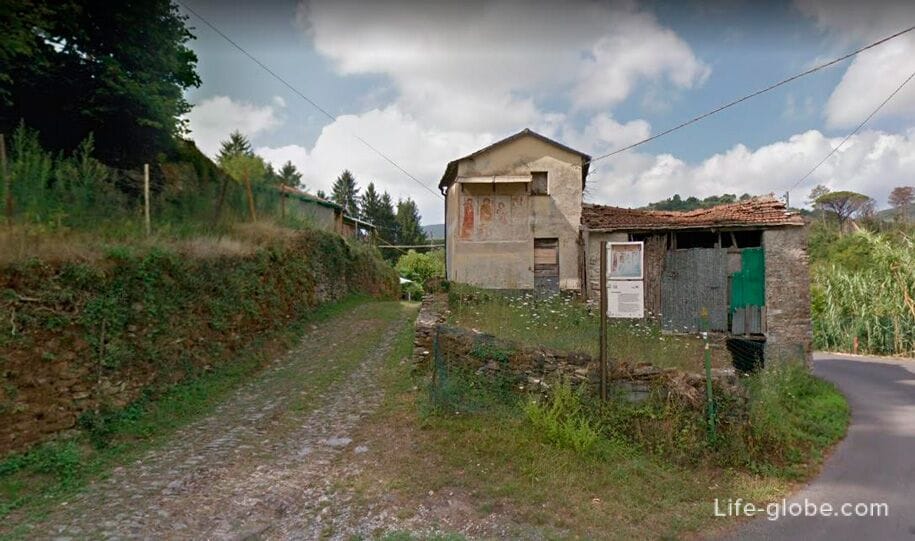
- The sanctuary of Montallegro (Santuario di Montallegro), or the Shrine of our lady of Montallegro (Santuario di Nostra Signora di Montallegro), which is one of the most important religious sites in Liguria.
The temple was built to celebrate the apparition of the virgin Mary to the peasant Giovanni Chichizola 2 July 1557.
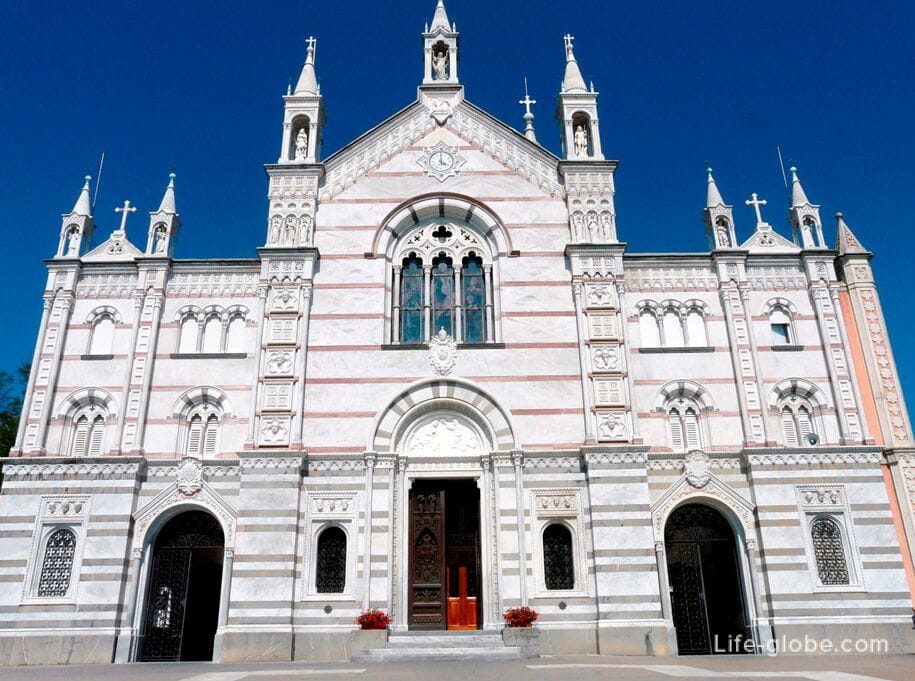
The sanctuary is located on a hill about 612 meters above sea level.
To get to the sanctuary by car (rent a car in Italy...), cable car (Funivia Rapallo - Montallegro), which is one of the attractions of Rapallo, or by bus line 92 from Rapallo centre (bus stop near the train station of Rapallo);
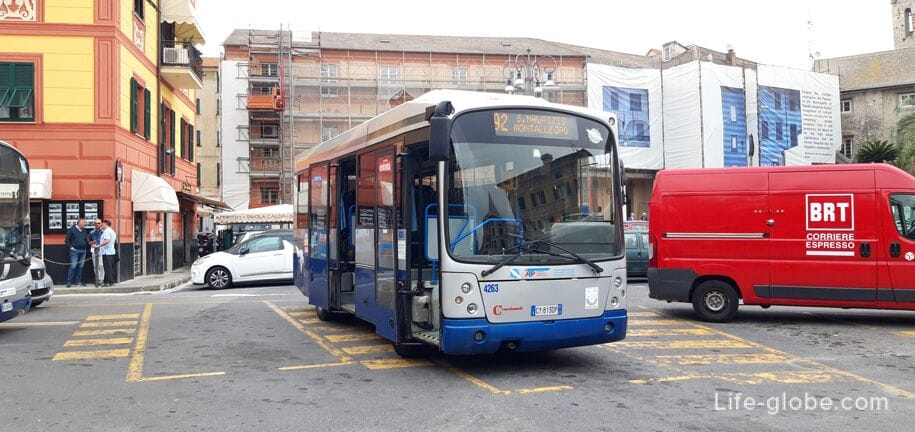
- mill complex San Maurizio di Monti (molitorio Complesso di San Maurizio di Monti), which is a group of old peasant houses, which are still the ancient mill and a Creamery.
In the main building on the first floor were recreated the original atmosphere of that ancient era. Read more about all the attractions in Rapallo...
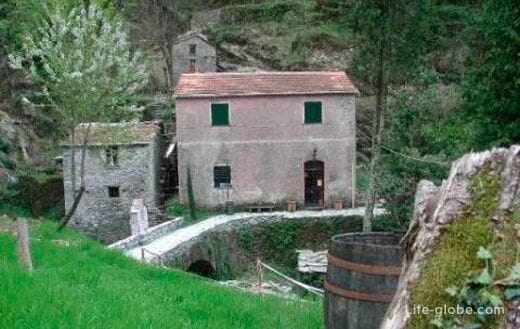
Every Thursday morning, in the street Vittorio Veneto, along the Central promenade of Rapallo, organize street exit the market.

In the historical centre, on Piazza Venezia square (Piazza Venezia), daily fruit and vegetable market.
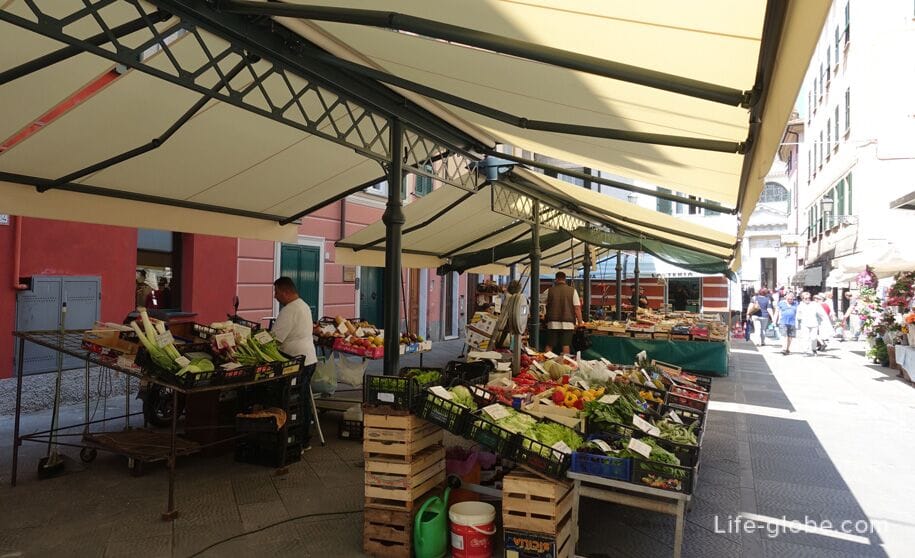
From Rapallo you can visit all the nearby towns and resort. Including:
- on foot or by bus to the neighbouring resort town of Santa Margherita Ligure. Read more about Santa Margherita Ligure...
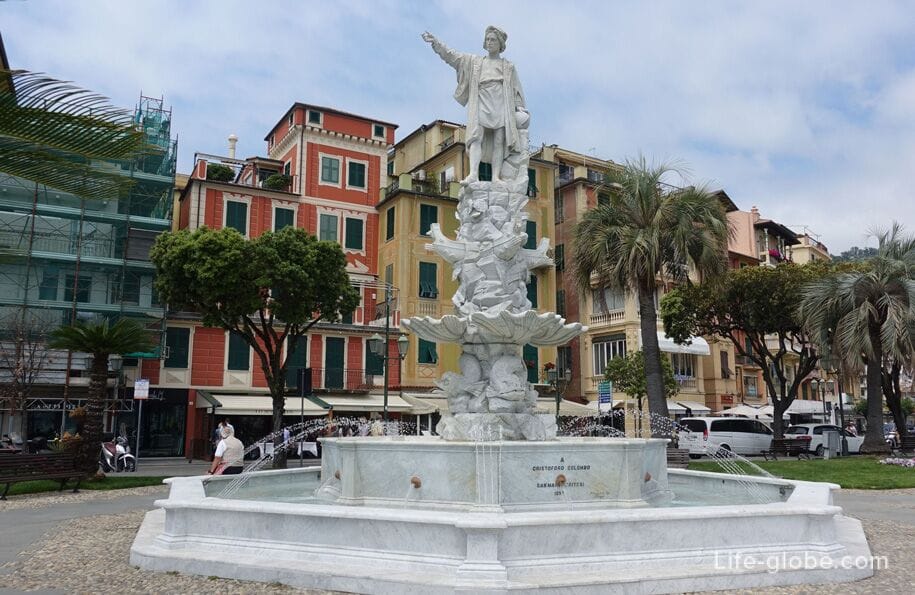
- on foot, by bus or by boat to visit Portofino. Read more about Portofino...

a small and colorful resort town of Sestri Levante. Read more about Sestri Levante...
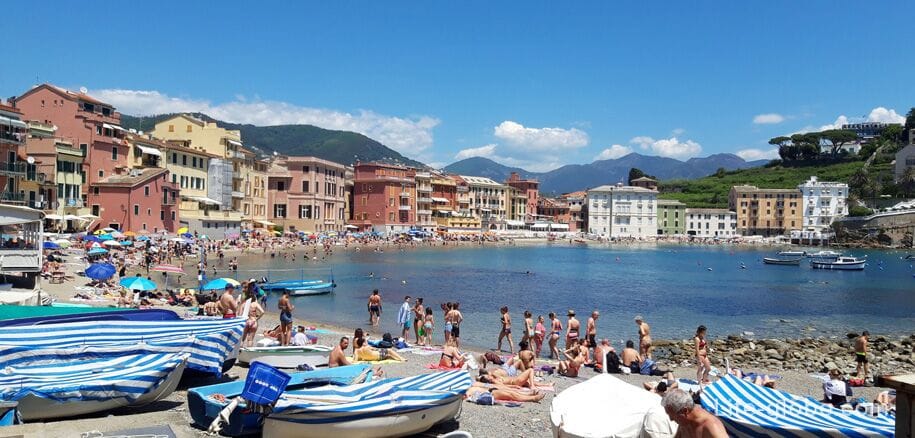
- Camogli, Chiavari, national Park Chinwe-Terre, the administrative center of the region Liguria - city of Genoa, etc.
Take a boat trip to Portofino or the same national Park Chinwe-Terre. Rent a boat or yacht and go to sea fishing.
Go to one of the Hiking routes in the surroundings hills and the promontory of Portofino.
In the city of Rapallo the airport there. Nearby airports are located in major cities, such as Genoa, Milan (including Bergamo), Turin, Pisa, Parma, Bologna, etc.
The closest airport is in Genoa, next in Milan, Bergamo, Turin and Pisa. Cheap flights to Italy...
From large cities to Rapallo can be reached:
From any city in Italy, including to and from airports can be reached in Rapallo by taxi.
Book a taxi/Shuttle service is possible in advance, even from home. At any time of the day, at the airport, you will meet your driver with a sign, which will be written your name and surname. For taxi is enough to tell us your flight details! View the price and book a taxi here...
One of the most convenient ways independent movement in Italy is a car. You can rent a car in advance, even from home, the car will be waiting for you upon arrival. Cars can pick up and rent here...
Trains
On the train to Rapallo can be reached either from Genoa or from La Spezia transfers in Genoa or La Spezia, respectively. Direct trains runs a bit.
On trains you'll be minutes from Genoa's centre. A direct train. The fare is 3,60 EUR, journey time 27 minutes.
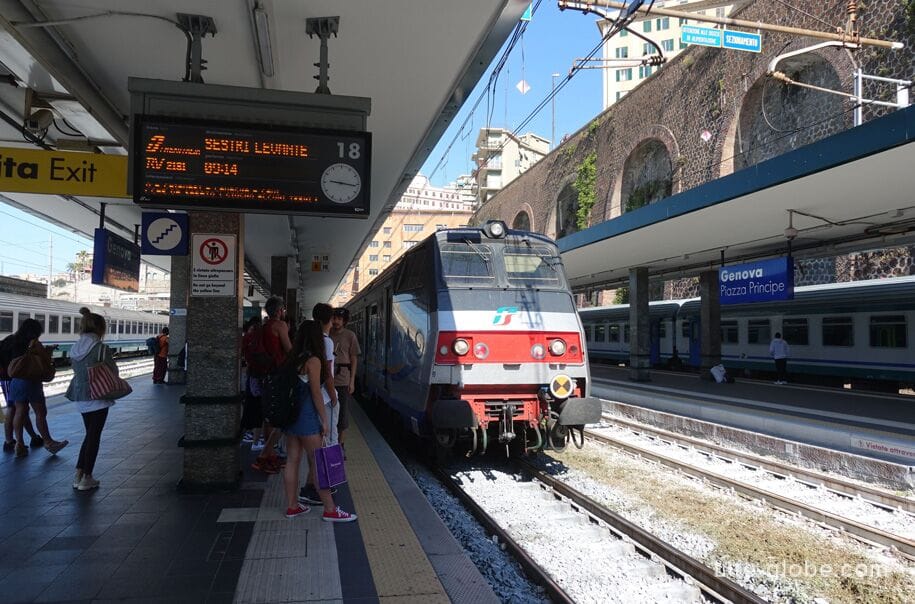
From La Spezia to Rapallo can be reached with a transfer in La Spezia. The fare from the Spices starts from 6,60€, journey time 35 - 50 minutes.
Direct trains a bit and it all depends on what city the route begins. Few direct routes are, for example, from Milan, Turin, Parma, Pisa, Viareggio, Rome.
Tickets for trains can be viewed and purchased on the website Trenitalia or here.
In Rapallo all trains arrive at the train station (Stazione Rapallo) located on Molfino square (Piazza Molfino), which is approximately 300 metres from the historical and tourist center.
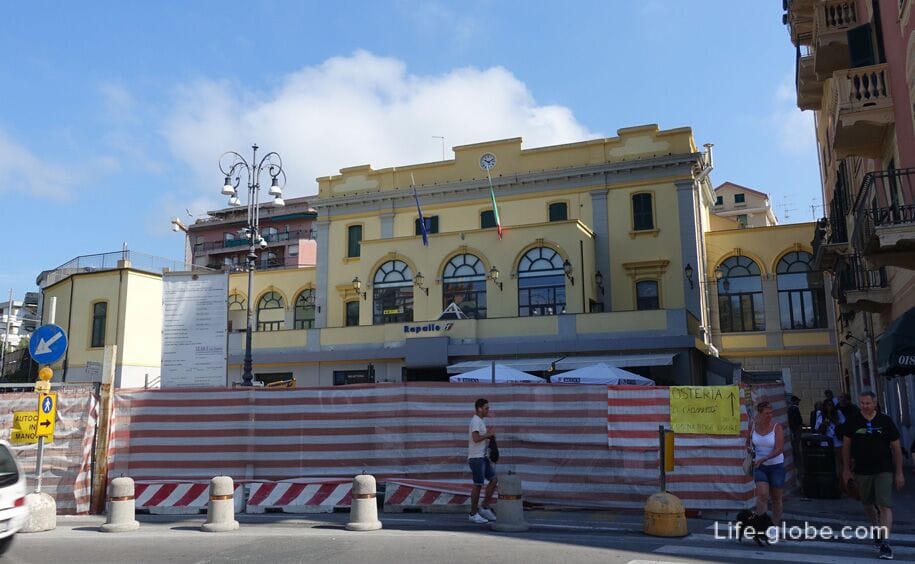
Buses
Frequent direct bus services between Rapallo and major cities missing.
But there are exceptions. For example, from Genoa to Rapallo and back can be reached by buses No. 75T and No. 75S. Bus to Genoa arrives at the station Genova Brignole, in Rapallo station, Rapallo FS. Travel time from 1 hour 05 minutes. The fare is 3 euros.
Before the trip the actual bus timetables we recommend you to check the website of the bus company.
Bus tickets to Genoa can be bought here (FlixBus), only it is better to choose the Italian language, so it will be more routes (e.g., direct bus from Bergamo airport, the fare is about 10 euros).
To visit Rapallo can be by sea with one of the boat trips from Sestri Levante, Portofino, Cinque Terre, etc.
Information on ferries and boat trips can be found on the website of the company.
The choice of accommodation in Rapallo are very diverse, ranging from budget guesthouses, campsites and apartments, to 5 - star and 4-star hotels, a boat and houses located near the beaches and historical centre, and more remotely from those.
All accommodation in Rapallo you can view and book here
Italy is part of the Schengen area. To visit the country, you may need travel insurance.
Italy belongs to the Euro zone because the country's currency is the Euro (€). Payment is accepted as cash or Bank card in many shops, cafes and restaurants.
